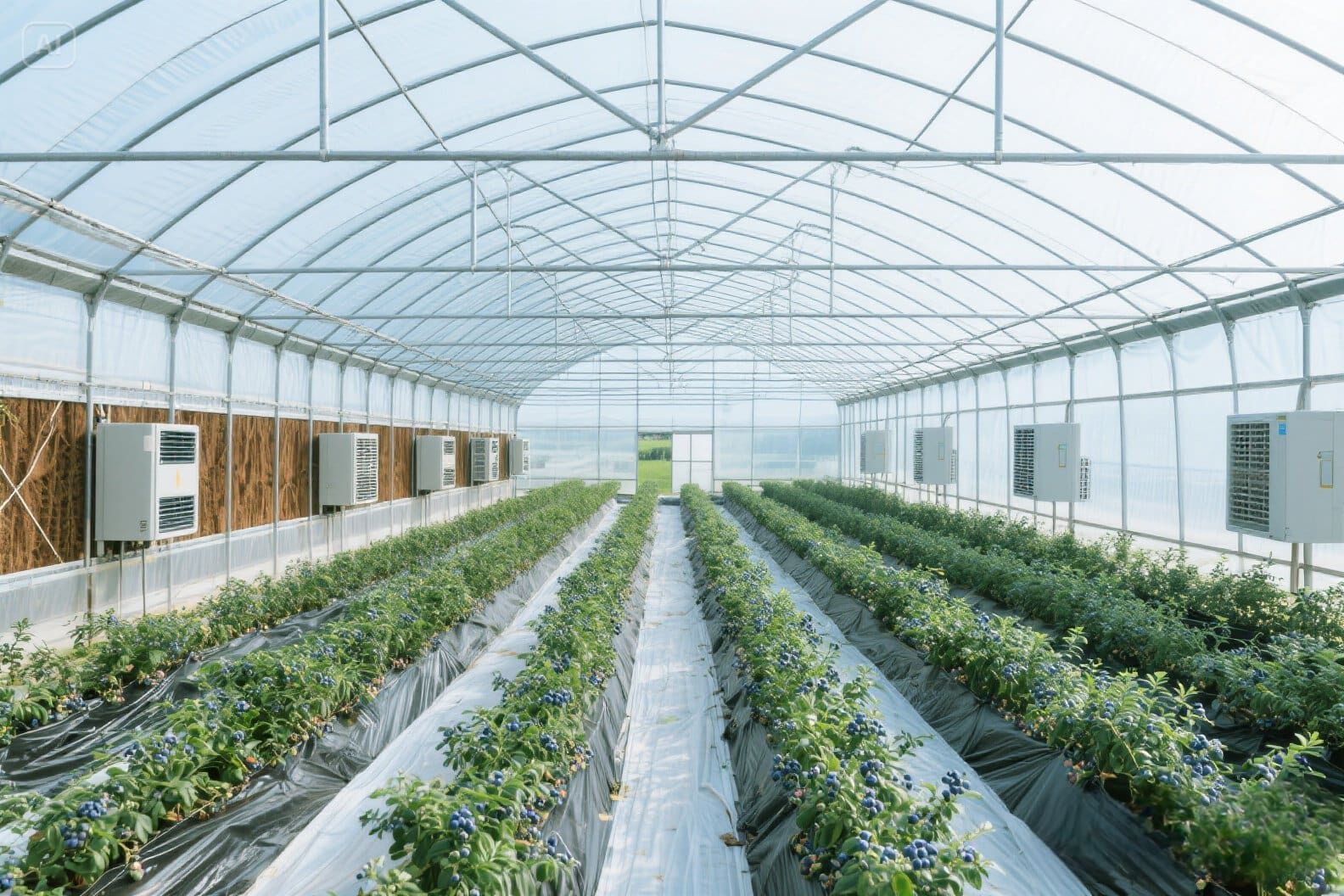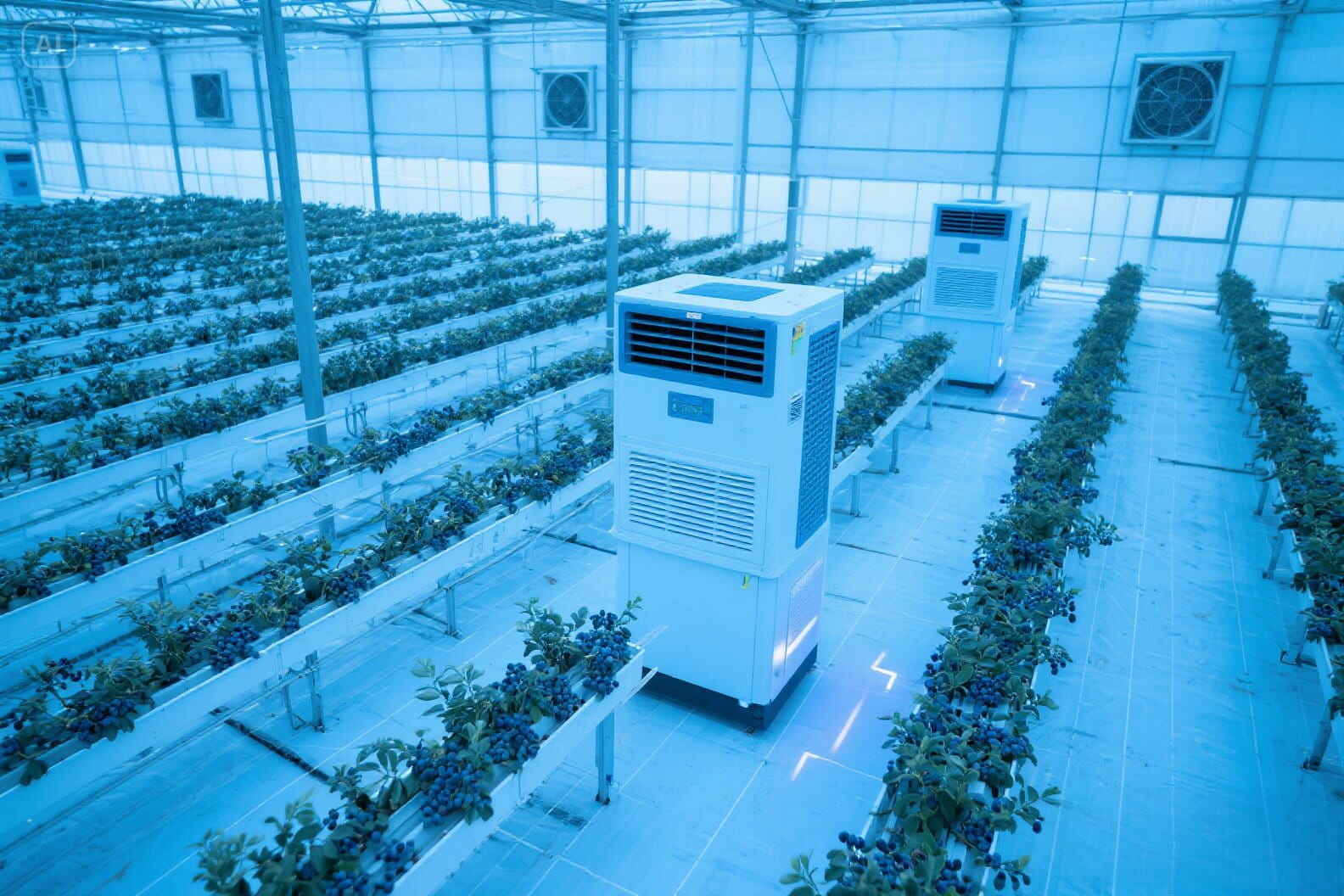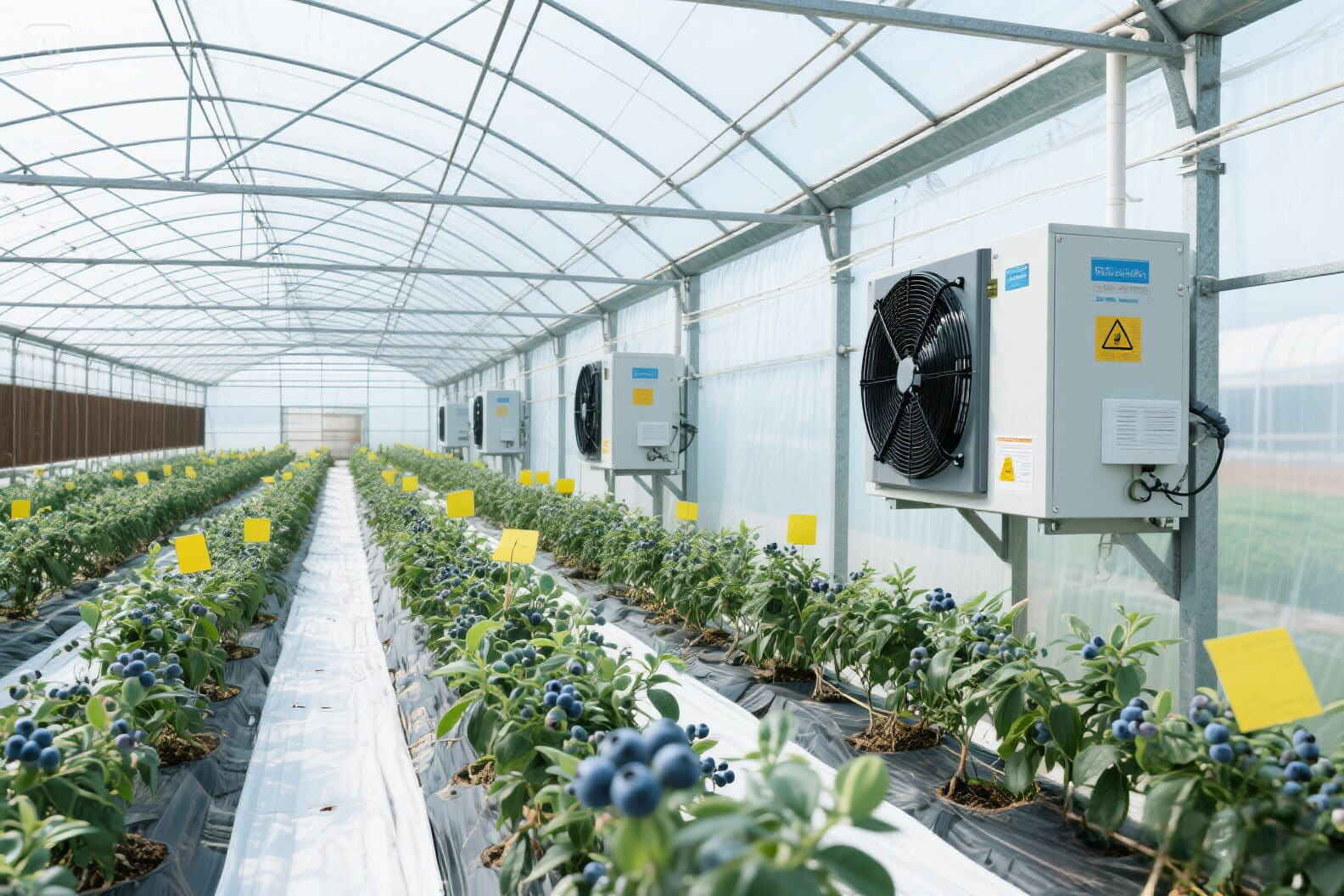In protected agriculture, blueberry farming is synonymous with "delicacy." This North American berry demands near-perfect growing conditions, with air humidity management serving as the critical "lifeblood" of quality. From bud break to harvest, every stage involves humidity challenges—negligence risks disease outbreaks and yield loss. How do we create the "ideal habitat" for blueberries in greenhouses? Let’s decode the humidity secrets behind blueberry cultivation.
The Humidity Chessboard: Four Growth Stages Under Pressure
1. Bud Break (60%-70% RH)
When shoots pierce the soil, humidity control shifts to "precision mode." This phase balances root vitality and grey mould prevention. As one grower notes: "It’s like regulating a newborn’s body temperature—too low dries buds, too high invites pathogens." Traditional flood irrigation causes humidity swings over 30%, while modern climate systems limit fluctuations to ±5%.
2. Flowering (40%-60% RH)
Pollination success follows an "inverted U-curve" with humidity. U.S. trials reveal humidity above 70% increases pollen clumping by 40%, slashing yields by 25%. Below 30%, stigma desiccation halts pollination. This stage demands balletic precision.
3. Fruit Expansion (50%-70% RH)
Cell division requires stable moisture, but prolonged humidity triples anthracnose spore growth. Florida farms using dehumidifiers cut disease rates by 67%, boosting yields by £960 per acre. This proves modern ag’s golden rule: Balance humidity, don’t eliminate it.
4. Harvest (≤50% RH)
At peak ripeness (distinct "white bloom"), post-harvest humidity must drop below 30%. Oregon’s tiered dehumidification extends shelf life by 15 days, achieving 98% marketability. This shift marks humidity control’s evolution from guesswork to data-driven precision.

Cracking the Code: Tech-Driven Solutions
Traditional farming faces a dilemma: ventilate to cool but risk chilling, or seal to retain humidity and invite disease. Modern greenhouses rewrite this narrative:
LuftGlück Smart Dehumidifiers: Precision Guardians
Equipped with sensors, these systems detect 0.5% humidity shifts. At dawn’s peak dew point, they activate gradient dehumidification—first opening vents, then activating compressors. LuftGlück units cut energy use by 40% and triple efficiency versus conventional systems.
Airflow Choreography: The "Air Ballet"
Innovative fans and dehumidifiers create "tactile airflow" without disturbing blooms. Bavarian trials show 92% humidity uniformity, eliminating condensation-linked diseases.
Cloud Platform Predictions: The Eye of Forethought
Integrating weather data, systems forecast humidity swings 12 hours ahead. Preemptive activation cuts extreme weather impacts by 80%.

The Cultivation Revolution: From Chance to Mastery
In North Rhine-Westphalia’s berry zones, IoT dehumidifiers redefine industry standards. One farm reports: traditional methods lost 15% to disease, while smart humidity control boosted premium yields from 68% to 93%, adding £2,600 per acre. System-generated humidity curves now act as digital "stethoscopes" for remote agronomists.
This revolution marks agriculture’s shift from empiricism to science. When dehumidifiers evolve into "environmental physicians," blueberry farming breaks free from climatic limits. Soon, that plump supermarket berry may trace its roots to a greenhouse’s precision-controlled humidity matrix—a testament to modern farming’s ingenuity.

Copyright © 2025 China Glory & Achievement Suzhou Technology Co., Ltd. All rights reserved.